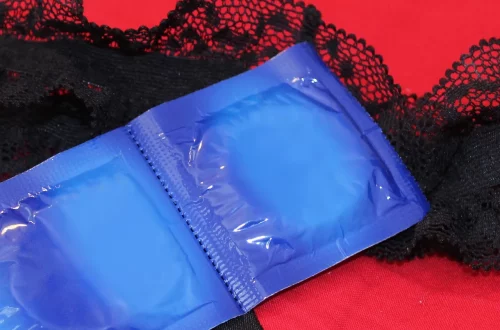
Transform Your Look with Salt and Pepper Beard Dye Techniques
Transforming one’s appearance can often feel like a daunting task, especially when it comes to facial hair. For many men, a beard represents not just a style choice but an integral part of their identity. However, as time passes, the natural color of facial hair can fade, leading to the emergence of gray or white strands. This transformation is entirely natural, yet it can lead to feelings of self-consciousness for some individuals. Embracing the salt and pepper look has become increasingly popular, as it reflects sophistication and maturity.
Salt and pepper beards can exude a rugged charm, reminiscent of classic masculinity. Still, many find themselves yearning to enhance this look rather than simply accept it. Beard dye techniques can offer an effective solution for those looking to rejuvenate their appearance. From choosing the right shade to mastering the application process, the journey to a revitalized beard can be both exciting and rewarding. Whether you’re aiming for a more uniform color or a subtle blend that enhances your natural grays, understanding the various techniques available will empower you to make informed decisions about your grooming routine.
Choosing the Right Beard Dye Color
One of the most crucial steps in transforming your look with beard dye is selecting the right color. The ideal shade should complement your skin tone and hair color while also enhancing the natural beauty of your beard. When it comes to beard dyes, you have several options, including semi-permanent and permanent dyes. Semi-permanent dyes typically wash out after a few weeks, making them an excellent choice for those who want to experiment with color without a long-term commitment. Permanent dyes, on the other hand, offer a more lasting solution but require more careful application and maintenance.
To choose the right shade, consider your natural hair color as a baseline. If your hair is predominantly dark, opting for a deep brown or black dye may be suitable. Conversely, if your hair is light or sandy, a lighter brown or even a subtle blonde might be more appropriate. For those with a mix of gray and colored hair, finding a dye that closely matches your original shade can help create a more harmonious look.
It’s also essential to take your skin tone into account. Men with warm undertones may find that dyes with golden or reddish hues enhance their natural color, while those with cool undertones might prefer ashier shades. Testing a small patch of hair before committing to a full application can help ensure that you’re happy with the final result.
In addition, consider the formulation of the dye. Many brands now offer natural and organic options that are gentler on the skin and hair. These products often contain nourishing ingredients like aloe vera and coconut oil, which can help maintain the health of your beard while providing a vibrant color.
Preparing Your Beard for Dye Application
Preparation is key when it comes to applying beard dye. A well-prepared beard not only allows for better color uptake but also minimizes the risk of irritation or uneven results. Start by thoroughly washing your beard with a gentle shampoo. This step removes any product buildup, dirt, and oils that could interfere with the dye’s efficacy. After washing, gently towel dry your beard to ensure it’s damp but not dripping wet.
Next, consider the length and shape of your beard. If it’s particularly long or unruly, it may be beneficial to trim it before applying the dye. This step will not only help achieve a more polished look but also make the application process more manageable. Once your beard is prepped, gather all necessary supplies, including gloves, a dye brush, and a mixing bowl if your dye requires preparation.
Before diving into the application, perform a patch test to ensure you don’t have any allergic reactions to the dye. Apply a small amount of the dye to a discreet area and wait for at least 24 hours. If you experience any irritation or adverse reactions, it’s best to explore alternative products.
When you’re ready to apply, use gloves to protect your hands from staining. Start by applying the dye from the roots to the tips of your beard using the dye brush. Work in sections to ensure even coverage, and don’t forget to get into the mustache area if applicable. After application, follow the manufacturer’s instructions regarding the processing time before rinsing it out.
Aftercare for a Dyeed Beard
Once the dyeing process is complete, proper aftercare is essential for maintaining the vibrancy and health of your beard. Just like the hair on your head, your beard requires specific care to keep it looking its best. Start by rinsing the dye out thoroughly with cool water. Avoid using hot water, as it can strip the color and moisture from your beard.
After rinsing, it’s advisable to use a color-safe conditioner specifically designed for dyed hair. This type of conditioner will help lock in color and provide added hydration. Apply it generously, focusing on the lengths and ends of your beard. Allow it to sit for a few minutes before rinsing again.
To maintain the color and health of your beard over time, consider incorporating a few grooming products into your routine. Beard oils and balms can help keep your beard soft and manageable while adding a subtle shine. Look for products that are free from sulfates and parabens to avoid fading the color too quickly.
Additionally, avoid frequent washing, as this can lead to quicker color loss. Instead, aim to wash your beard 2-3 times a week, using a gentle beard shampoo. Regular trimming will also help remove any split ends and keep your beard looking fresh and well-groomed.
Finally, be mindful of your lifestyle choices as they can impact the longevity of your dye. Exposure to sunlight can fade colors, so consider using a UV-protective spray if you spend a lot of time outdoors. Hydration, a balanced diet, and minimizing stress can also contribute to the overall health of your beard.
Common Mistakes to Avoid When Dying Your Beard
While dyeing your beard can be a straightforward process, there are several common mistakes that can lead to undesirable results. Being aware of these pitfalls can help ensure your dyeing experience is successful and satisfying.
One frequent error is choosing the wrong shade. As previously discussed, selecting a color that doesn’t complement your natural hair or skin tone can lead to an unflattering appearance. Always consider testing a small section before committing to a full application.
Another common mistake is neglecting to prepare your beard properly. Skipping the washing step or failing to trim unruly hair can lead to uneven color application. Additionally, not performing a patch test can result in allergic reactions, which can be uncomfortable and frustrating.
Timing is also crucial in the dyeing process. Many individuals are tempted to leave the dye on longer than recommended, thinking this will produce a more vibrant color. However, doing so can lead to overly dark or unnatural results. Always follow the manufacturer’s guidelines regarding processing time.
Lastly, many forget the importance of aftercare. Failing to use color-safe products or washing the beard too frequently can result in rapid color fading. Incorporating a robust aftercare routine is essential for maintaining your transformed look.
In conclusion, transforming your look with salt and pepper beard dye techniques involves careful consideration, preparation, and ongoing maintenance. By selecting the right color, preparing your beard properly, and avoiding common mistakes, you can achieve a sophisticated and fresh appearance that highlights your individuality.
**Disclaimer:** This article is not intended as medical advice. For any health-related issues, please consult a qualified healthcare professional.




